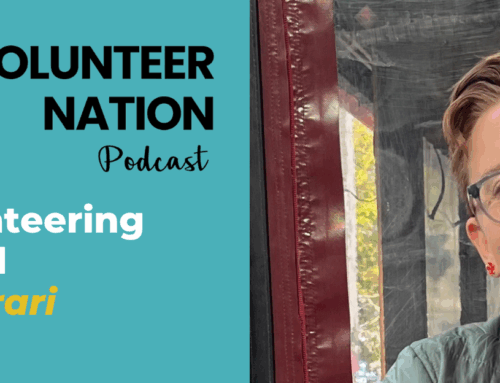Do Volunteers Have a Role in Capacity Building for a Nonprofit Organization?
Capacity building for a nonprofit organization is defined as engaging in activities and developing processes that strengthen an organization’s ability to fulfill its mission. Activities might include strategic planning, updating communications strategies, technology upgrades, operational improvements, board development, and improving community and volunteer engagement.
In response to fallout from the ongoing COVID-19 pandemic, many organizations have had or will have to re-evaluate how they go about fulfilling their mission. Using a suitable approach for their circumstance, a pro-active, sustainability-minded organization can use the current climate as an opportunity to begin the groundwork for their nonprofit’s capacity building plan.
Approaches to Capacity Building for a Nonprofit
To build capacity is to obtain, improve, and retain the skills, knowledge, tools, equipment, and other resources needed to do the work competently and efficiently. It allows individuals and organizations to perform at a greater capacity and maybe even on a grander scale.
For some nonprofits, that may mean re-allocating or increasing the budget. For others, it could mean growing the organization’s reach and influence on a national or global scale.
There’s a lot to be considered when undertaking any form of capacity building project. It is important to approach the endeavor with a firm vision of your organization’s end goals.
Is it to increase your ability to serve more recipients without increased funding? To establish sustainable systems so the organization can withstand challenges into the future? Or, is it some other key driver of transformation? Whatever your goals, or exact process your organization chooses when strategizing to build capacity, there are four key methods to focus your efforts to ensure no components are left to chance.
Method #1 – Stages
Regardless of the degree to which your organization needs or wants to build capacity, you can expect the process to follow some basic frameworks.
In their report, “A Network Approach to Capacity Building”, authors Jennifer Chandler and Kristin Scott Kennedy tell us that there are four stages of capacity building.
Stage 1: Exploration – In this first phase, the organization identifies the need for change and determines what modifications might be necessary to increase their capacity. This will include an audit of current circumstances and identification of the gaps that exist between where they are currently and where they want to be.
Stage 2: Emerging Implementation – This is where the employees & staff really begin to take part in evaluation activities, learn new skills, update technological or logistical infrastructure, and learn to use resources more efficiently.
Stage 3: Full Implementation – Here. the evaluation of processes is continued. With an eye on new targets in product or service delivery, processes start to be refined.
Stage 4: Sustainability– Here, the consistent use of added skills and practices takes place. This stage is similar to continuous improvement, as going efforts are employed to maximize the effectiveness of the organization, as it continues to scale its services.
Method #2: Levels
At each phase of capacity building there are four aspects of operation an organization must assess and improve, for example, the transition of communications tracking from a series of sticky notes to digital software. As every nonprofit capacity building process involves its own unique variables, yours will have to define the parameters of each for your own circumstance. Variables that your organization might assess or improve include:
-
- Information
- Skills
- Structures
- Processes
Over time, the granularity with which these are assessed, augmented and optimized becomes more refined and specific. And thus, the organization builds strength and efficiency.
Method #3: Focus Points
For increasing a nonprofit’s impact, this Getting Smart article breaks it down, simply, into three potential strategies your organization might pursue to build its capacity.
-
- Service – where an organization chooses to broaden either the products or services they deliver to clients (this may include through a volunteer workforce)
- Replication – increasing capacity to supply services by making them available from additional locations. This may be your organization operating added locations, or creating affiliates, where other organizations or service providers supply services on your behalf.
- Advocacy – sharing your organization’s success by advocating for policies to support the change your organization strives to make. Industry sources say that fewer than 3% of US nonprofits lobby on behalf of their cause, although they all have the right to do so.
Method #4: Operational Areas
In their discussion of sustainably scaling your nonprofit, this Forbes article lists four areas on which you might focus to build the capacity of nonprofit organizations:
-
- Infrastructure
- Operating Strategy
- Budget And Funding
- People
They warn that organizations have a tendency to forget the people aspect in endeavoring to build capacity. You not only need to have the right number of people on hand, to embrace scaling with resilience, you also need those people well-placed and well-trained to effectively implement new skills and processes required by growth.
These are just a few ways to explore where and how you might improve your agency’s ability to scale its impact. Use this list to help you explore all that may be possible and then make decisions on where to be focus your efforts for greater traction.

Capacity Building for Nonprofits as We Recover
In light of circumstances with ongoing, worldwide recovery efforts from health and economic impacts of COVID-19, the Nonprofit Finance Fund has conducted a COVID-19 Survey.
From their research, we learn that nonprofits are being challenged by rapid and/or unexpected changes in demand for their services. 17% of respondents indicated they have had a significant (more than 25%) increase in demand and 31% of respondents report anticipation of similar increases in demand in the future.
Further, 56% of nonprofits reported staff with limited or no availability due to disruptions in child or dependent care and 43% reported volunteers in that same position.
With 75% of respondents reporting reduced revenue from products or services and 57% anticipated future reduced revenue, current resource planning will most likely be insufficient to meet future demand for services.
When asked what resources or guidance would be most helpful, the most prevalent themes emerging from the survey indicated nonprofits need:
- flexible funding or general operating support
- access to immediate funding for urgent needs
- to be able to take care of clients and staff during this crisis
This research points to some significant gaps in nonprofit capacity. So, what type of capacity-building effort could address this situation?
Volunteerism As Capacity Building for Nonprofits
While nonprofits grapple with how to build capacity, a clear and compelling possibility is the mobilization of community volunteers. Volunteerism is a strategic choice to use human resources to build capacity, and data shows it works.
We know that an investment in volunteerism can reap rewards. In fact, we’ve written on the subject. previously, as have others
A National Council on Aging study concluded that for every $1 invested, organizations realized $8 in return, as a result of investment in older volunteers in leadership roles.
A Fidelity® Charitable Gift Fund and VolunteerMatch study found that volunteers donate 10 times more than non-volunteers. Further, two-thirds of volunteers make financial contributions to the organizations where they volunteer.
Across a wide array of organizations, Reimagining Service offers case studies that show how investments in volunteer capacity building have reaped rewards.
Here at Tobi Johnson & Associates, we have helped organizations build capacity through wise and targeted investment in their volunteer programming. By identifying and replacing ineffective volunteer management approaches with research-based practices, nonprofits can address their organizational gaps with a reinvigorated pool of talent.
In fact, in the face of ever-growing community needs and persistent economic strains on nonprofits, volunteer mobilization may not simply be “nice to have.” It may be necessary to not only building capacity but maintaining it.

Volunteers as a Path to Capacity Building
Results from the 2021 Nonprofit Leadership Impact Study show that while nonprofit organizations are still constrained by a lack of resources, there has been an improvement since last year.
Even with this improvement, 55% of nonprofits struggle to provide competitive compensation to staff members. Strategic use of well-trained volunteers may alleviate these challenges by delegating specific roles and tasks to volunteers, nonprofits can alleviate the budgetary burdens of hiring added employees and become better situated to offer existing staff suitable compensation.
In fact, research shows that volunteer mobilization can have a positive impact on nonprofit budgets and capacity to meet the mission. Points of Light Service Enterprise Initiative research finds that organizations that leverage volunteers across all levels of their enterprise, and manage them effectively, run at nearly half the median budget.
If staff are unable to mobilize sufficient numbers of qualified, committed, and productive volunteers, for their organization, it creates a cascade of issues for the nonprofit:
Paid staff will burn out and either become less effective or leave their jobs, taking all their knowledge and expertise with them (and sometimes taking loyal volunteers with them, too);
The total number of volunteers, hours contributed, and roles filled will decrease over time (we see this kind of slow volunteer attrition with long-standing organizations who simply haven’t evolved their practices, embraced technology, or expanded their potential volunteer markets);
The organization will be unable to meet their mission or scale their impact because they have insufficient human capital, due to paid staff and volunteer turnover;
Funders and donors will begin to question the organization’s lack of community support and distrust their capabilities or relevance;
They will lose out on future funding opportunities and alliances that could help solidify the resource base from which to make an even bigger difference.
In the face of ever-growing community needs and persistent economic strains on nonprofits, empowering growth through your volunteer team is crucial.
What steps will your organization be taking toward capacity building?








Leave A Comment